DOI:
10.1039/C1AN90100A
(Editorial)
Analyst, 2012,
137, 21-23
Editorial Board profiles
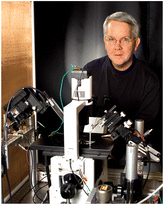 |
| | Plate1 Paul Bohn | |
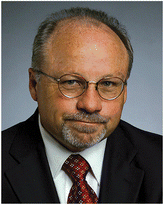 |
| | Plate2 Steven Soper | |
Steven A. Soper graduated with a Ph.D. from the University of Kansas in 1989 and then served as a Post-doctoral Fellow at Los Alamos National Laboratory. He joined the faculty at Louisiana State University (LSU) in 1991 and was named the William L. & Patricia Senn Professor in 2002, alongside positions as Professor of Mechanical Engineering and an adjunct Professor of Biological Sciences. In June 2011 he joined the University of North Carolina's Joint Department of Biomedical Engineering as a tenured Professor. Professor Soper's research focuses on BioMEMS/BioNEMS, single molecule detection, and new bioassay developments. He has received various awards, such as the R&D 100 Award (1993), the Charles E. Coates Award for Contributions to Chemical/Engineering Research in Louisiana (2001), the A.A. Benedetti-Pinchler Microchemical Award (2006) and an LSU Distinguished Research Award (2008). He has accumulated over 225 peer-reviewed research publications and has mentored 30 Ph.D. students.
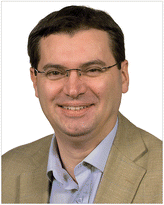 |
| | Plate3 Pavel Matousek | |
Pavel Matousek obtained his Ph.D. degree in physics from the Czech Technical University, Prague (1994). For over 20 years, he has worked at the Rutherford Appleton Laboratory in the area of vibrational spectroscopy and high power lasers. He proposed the use of Optical Parametric Chirped Pulse Amplification (OPCPA) for the generation of multi-petawatt peak powers and pioneered the concept of Kerr gated Raman fluorescence rejection. More recently, he proposed the concept of Spatially Offset Raman Spectroscopy (SORS) and introduced transmission Raman spectroscopy into pharmaceutical analysis. Currently, he is developing SORS and transmission Raman spectroscopy for non-invasive disease diagnosis, security screening and pharmaceutical quality control. Pavel has published around 170 peer-reviewed articles, filed over 10 patents and co-edited a book on Raman spectroscopy. His honours include 2009 Charles Mann Award for Applied Raman Spectroscopy from the Federation of Analytical Chemistry and Spectroscopy Societies (FACSS), 2002 and 2006 Meggers Awards from Society for Applied Spectroscopy (SAS) and 2008 Measurement in Action Award from the Institution of Engineering and Technology (IET). Pavel’s international functions include the Chair of the Meggers Award Selection Committee of the SAS, the Program Chair of FACSS 2011 (Reno, NV) and the Chair of UK’s Regional Section of SAS. Pavel is a Fellow of the Royal Society of Chemistry, Fellow of the Science and Technology Facilities Council, a visiting professor of the University College London and a founding director of Cobalt Light Systems Ltd, a spinout company commercialising SORS technology.
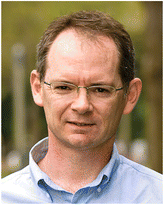 |
| | Plate4 Justin Gooding | |
Justin Gooding is the leader of the Biosensor and Biointerfaces Research Group at the University of New South Wales. He obtained a DPhil from Oxford University under the guidance of Prof. Richard Compton before becoming a post-doctoral research associate at the Institute of Biotechnology at Cambridge University. In 1997 he returned to his native Australia as a Vice-Chancellor Post-Doctoral Research Fellow at the University of New South Wales before taking up an academic position in 1998. He was promoted to full Professor in 2005 and is currently an Australian Research Council Professorial Fellow. His research interests lie in biosensors, biointerfaces and surface chemistry.
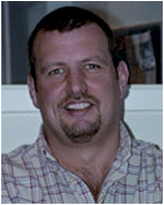 |
| | Plate5 Duncan Graham | |
Duncan Graham is Professor of Chemistry at the University of Strathclyde, Glasgow. He has a research group of around 30, and over 140 publications to date. He is also a co-founder of the Centre for Molecular Nanometrology and is a co-founder and director of Renishaw Diagnostics Ltd (http://www.renishawdiagnostics.com/).
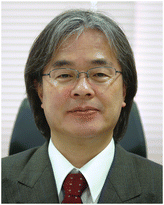 |
| | Plate6 Takehiko Kitamori | |
Takehiko Kitamori is a full professor at the Department of Applied Chemistry, the Graduate School of Engineering, The University of Tokyo, and also he is Dean of both Faculty and Graduate School of Engineering. His research activity covers laser spectro-analytical chemistry, and micro and extended-nano chemistry.
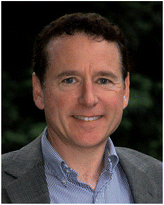 |
| | Plate7 Evan Williams | |
Evan Williams received his Ph.D. from Cornell University in 1990 and completed a Postdoctoral Fellowship at Stanford University before joining the faculty at the University of California at Berkeley, where he also serves as the Associate Director of the Center for Analytical Biotechnology and the Faculty Director of the QB3/Chemistry Mass Spectrometry Center. He also holds a joint appointment in the Physical Biosciences Division at the Lawrence Berkeley National Laboratory. Professor Williams' research group is developing and applying novel instrumental and computational techniques in mass spectrometry, tandem mass spectrometry, separations, and laser spectroscopy for improved molecular structure elucidation and to solve problems of fundamental interest in chemistry and biophysics. A number of different types of state-of-the-art mass spectrometers and lasers are used in these studies. He has received a number of awards including the American Society for Mass Spectrometry Research Award in 1994 and the Alexander von Humboldt Senior Scientist Award in 1999.
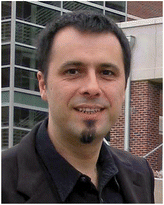 |
| | Plate8 Boris Mizaikoff | |
Boris Mizaikoff received his Ph.D. in Analytical Chemistry at the Vienna University of Technology in 1996. Heading the Chemical Sensor Laboratory (CSL) he has been responsible for numerous research projects in the field of chemical IR sensors, including 4 multinational projects funded by the European Union. In 1997, he joined the University of Texas, Austin, USA as a post-doctoral fellow. In October 2000, he finalized his Habilitation at the Vienna University of Technology. In 2000, he became a faculty member at the Georgia Institute of Technology, School of Chemistry and Biochemistry, heading the Applied Sensors Laboratory (ASL). In 2004, he became the Director of the Focused Ion Beam Center (FIB2 Center) at Georgia Tech, and has been a member of the Center for Cell and Molecular Signaling at Emory University, School of Physiology. In the autumn of 2007, he joined the faculty at the University of Ulm, Germany, as a Chaired Professor heading the Institute of Analytical and Bioanalytical Chemistry. His research interests focus on optical sensors, biosensors and biomimetic sensors operating in the mid-infrared spectral range, applications of novel IR light sources (e.g. quantum cascade lasers, system miniaturization and integration based on micro- and nano-fabrication, multifunctional scanning nanoprobes, scanning probe tip integrated nano(bio)sensors, focused ion beam (FIB) microscopy, development of chemical recognition interfaces for separation and sensing applications, chemometric data evaluation, advanced vibrational spectroscopic techniques, environmental analytical chemistry, process analytical chemistry and biomedical diagnostics. Dr Mizaikoff is an author/co-author of over 130 peer-reviewed publications, 14 patents and numerous invited contributions at scientific conferences.
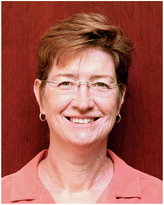 |
| | Plate9 Vicki Wysocki | |
Vicki Wysocki received her Ph.D. from Purdue University and, following postdoctoral positions at Purdue and the US Naval Research Laboratory, became an Assistant Professor at Virginia Commonwealth University. She joined the University of Arizona in 1996 and since has served as Department Head for the Department of Biochemistry and Molecular and is current Chair of the new merged Department of Chemistry and Biochemistry. In 2009, she received the Distinguished Contribution to Mass Spectrometry Award from the American Society for Mass Spectrometry. Professor Wysocki’s research interests include bioanalytical mass spectrometry, peptide and protein sequencing, ion-surface collisions for surface characterization of organic thin films, biodefense, and mosquito proteomics and metabolomics. Webpage: http://quiz2.chem.arizona.edu/wysocki/index.htm.
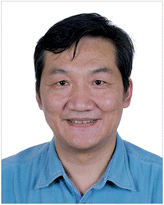 |
| | Plate10 Xinrong Zhang | |
Xinrong Zhang was born in Xian, China, received his Bachelor's and Master's degrees in Chemistry from Shaanxi Normal University, China, and his Ph.D. degree in analytical chemistry from the University of Ghent, Belgium. He received a professorial position in the Department of Chemistry, Tsinghua University, China in June 1998. His current research interests are focused on developing optical and mass spectrometric techniques for biomedical and environmental analysis, including nanomaterial-based luminescent analysis, ICPMS-based immunoassays and ambient ion source for mass spectrometry. He has published over 170 papers in international journals and several book chapters on these topics. He received an Analytical Chemistry Award from the Chinese Chemical Society in 2009 and he is now a Fellow of the Royal Society of Chemistry.
|
| This journal is © The Royal Society of Chemistry 2012 |
Click here to see how this site uses Cookies. View our privacy policy here. 









